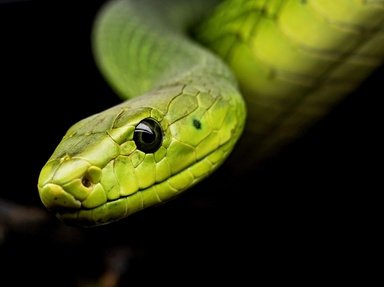Quiz Answer Key and Fun Facts
1. The longest venomous snake in Africa is which of these?
2. This snake can be found in regions of Africa, the Middle East, and Asia. According to data, this specific snake is believed to be more lethal to humans than all other snake species put together. What is the name of this snake?
3. What is the name of this snake that can be found in the south-eastern coast of Australia.
4. The inland taipan is also known by what other common name?
5. This snake has the longest fangs, which can grow up to twelve mm (half an inch), of all the venomous snakes in Australia. Which of these is it?
6. I am known as one of the big four venomous snakes in India. Can you identify me?
7. Which of these is the world's longest venomous snake?
8. Where can you find the Eastern brown snake?
9. What is the largest species of rattlesnake in North America?
10. I am known as a boomslang. In what part of the world do I live?
Source: Author
Lord_Digby
This quiz was reviewed by FunTrivia editor
rossian before going online.
Any errors found in FunTrivia content are routinely corrected through our feedback system.

